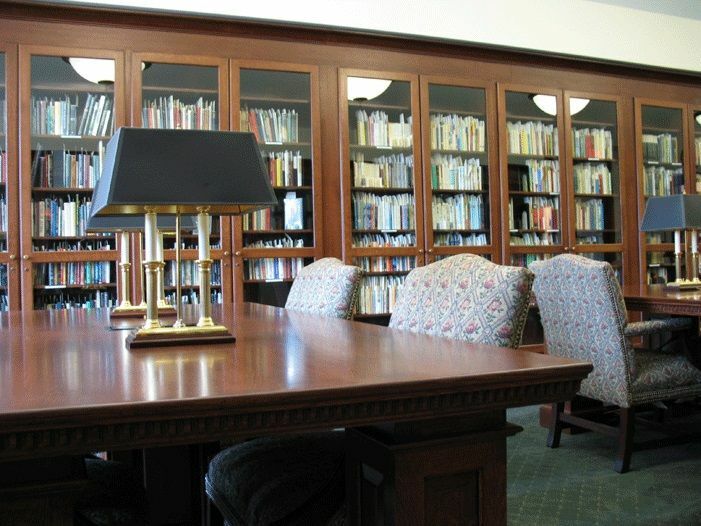How many of you have ever done research in an archive? It’s one of the most rewarding experiences of a scholar’s rich and rewarding life. I do love it all: writing, revising, editing, teaching, preparing classes, doing research among published works, consulting with writers, and more. But there is something special about this kind of focused word in a purpose-built, dedicated space that houses rare, unique, and precious manuscripts.
This is, what, my fourth time at the Marion E. Wade Center? I think so. It’s certainly the longest I’ve spent here: two weeks! What a luxury! The purpose is to fill gaps in my knowledge so that I can finish up the content of The Oddest Inkling: An Introduction to Charles Williams and move on to tidying it up. Right now, it’s a sprawling, sloppy, incoherent mess of a manuscript, but if I have but world enough and time, that shall we set right in due course.
Anyway, my first goal was to read through CW’s theological manuscripts as part of my quest to pin down just what he believed on various points of Christian doctrine. I’ve just finished doing so to the extent that I am able: His handwriting, especially in his lecture notes, and most especially as he aged and his neurological problem make his hands shake worse and worse, is extremely difficult to read. The first day, I despaired of making any sense out of it. The second day, I eschewed vanity and traded my contact lenses for my brand new <gasp> bifocals! Alas for the depredations of age. Anyway, with the spectacles on my nose on, a magnifying glass to further assist, and a growing familiarity with his handwriting, I’ve been able to make out most of the words. And wow have I made some discoveries!
There is a particular frustration that I’m facing, and I suppose all researchers wrestle with this: I want to fix everything. I want to re-label all the manuscripts with greater detail as I dive into them. I want to go back and compare all published editions against all the MSS to check for perfect accuracy (not all the MSS have been compared and collated! Can you imagine publishing something without checking all extant manuscripts first?! shocking). Otherwise, there might be something wrong in print!! That would be infinitely worse than “something wrong on the internet,” haha. I want completionism: every last document scanned, OCR’d, transcribed, and published. I want to read every last word he every wrote, memorize it all, and be able to recall it perfectly as I write. I want to work on all the projects at once: The Oddest Inkling; the book version of my dissertation, From Thaumaturgy to Dramaturgy;The Annotated Arthuriad; and the monograph examining novels by 20th-century magicians depicting other 20th-century magicians as characters.
But I can’t. Two weeks is a long time, but it’s not even enough for the first of those lofty goals.
I have to focus. I have to stay on target.
And therefore, with that in mind, I’ve just now finished skimming through, sometimes reading, and a few times transcribing his unpublished theological manuscripts. (Note: some have been published here and there in little journals like Time & Tide, but are otherwise uncollected). And I’ve found some treasures! I’ll mention three of them here.
- CW / MS-5, mis-labeled “Short story about Creation.”
I think it should be called “Elohim & Celia.” It is an autobiographical, allegorical narrative about “The Elohim” making a beautiful new Creation and wondering what to call her. He makes friends and companions for her, and one worships and serves her, then names her Celia. Alas, she turns to a new friend and rejects him for a time. But the Elohim, seeing that she is not fulfilling her teleology of being not only “beautiful, obedient, and virginal” but also “rebellious” and “wanton,” decided to make her first friend a “lord” over her, so that he could give her commands to obey and disobey. Thus follows some awkwardness about mild sadism and how it’s good for their souls.
- CW / MS-74 Lecture notes on Christian Marriage
This is also mis-labeled; only the first page is from lecture notes, and it’s a random leaf, not the first page. The rest is a “memorandum” or proposed manuscript that he clearly hoped the Church would endorse and publish. I wish I knew when it was written; I’d guess early 1920s, as a sort of draft of the material that would become Outlines of Romantic Theology and then get reworked and reworked until the core ideas eventually made their way into The Figure of Beatrice. He makes a couple of points in this piece that I think are valid and helpful. The first is that the Church in general has done nothing to theologize, theorize, or even speak helpfully about the experience of “falling in love.” It just kinds of assumes that you’ll do it once, marry that person, and then be set for life. Anything else, it ignores, frowns upon, or condemns. (This is my rough paraphrase and modernization). Instead, he says, the Church needs to develop a rigorous theology of romantic love that’s realistic and capacious. Second, he distinguishes among three kinds of love or states of mind as far as loving someone: 1. there’s the passionate, overwhelming phenomenon of “falling in love,” having a vision of the person glorified, seeing them as they truly are or were meant to be. This may or may not involved the second kind; 2. sex appetite–clear enough what that is. But the first kind could be between any two people without sexual attraction. Later, he even says it could be towards a hobby or avocation of some kind. Then there’s the final one, 3. quiet affection, which can develop in a long marriage or friendship. Again, it may or may not coincide with either or both of the other two. How blessed the relationship that enjoys all three at any phase, and especially if the latter two last! The falling in love, he points out, never lasts, and woe betide us if we expect it to do so.
- CW / MS-15 and MS-524 / X “A cloud received him” notes for sermon
This is rather a poignant item: notes CW was writing for a sermon that he was scheduled to deliver at St. Mary the Virgin Church in Oxford on Whit Sunday, May 20, 1945. As you may know, he died on the 15th. The manuscript is unfinished; there are only four and a half handwritten pages, and he’s barely getting going. Did he head off to the hospital in the middle of writing it, leaving it fragmentary, not knowing he was headed to his deathbed?? This could very well be the last thing he wrote. His last letter to his wife is dated May 8th, and Roma King’s notes at the end of To Michal from Serge tell us that he got sick on May 10th, Michal came up from London on May 12th, and he went to hospital (I guess on that same day?). It seems that he must have left these notes either at the Spalding’s house where he was staying, in C.S. Lewis’s rooms at Magdalen College, which he used frequently, or perhaps in his makeshift OUP bathroom-turned-office. I’m guessing Michal, Margaret Douglas, or Raymond Hunt found them when they went through his things, then Douglas or Hunt probably typed it up. I found it moving to look at his lovely (if nearly illegible) handwriting, with its beautiful lower-case ds whose uppers swirl back over the letter preceding them, and think of him working on this, setting it down when he began feeling unwell, maybe picking it up again and trying to go on, then leaving it forever.
Besides the biographical interest, there is also (of course) the content. It’s not a bad piece for a final statement, as it combines his idiosyncratic Christianity with his unique adaptation of the hermetic tradition. What’s it “about”? The thorough-going nature of the Incarnation; the Ascent of His flesh after His Resurrection; of the union of mankind with that perfect Man; the ignorance of the disciples about what was really happening; and the coming of the Holy Spirit. I’ve transcribed the piece and made an annotated edition; if you’re a supporter of mine, I can give you access to it!



Leave a Reply